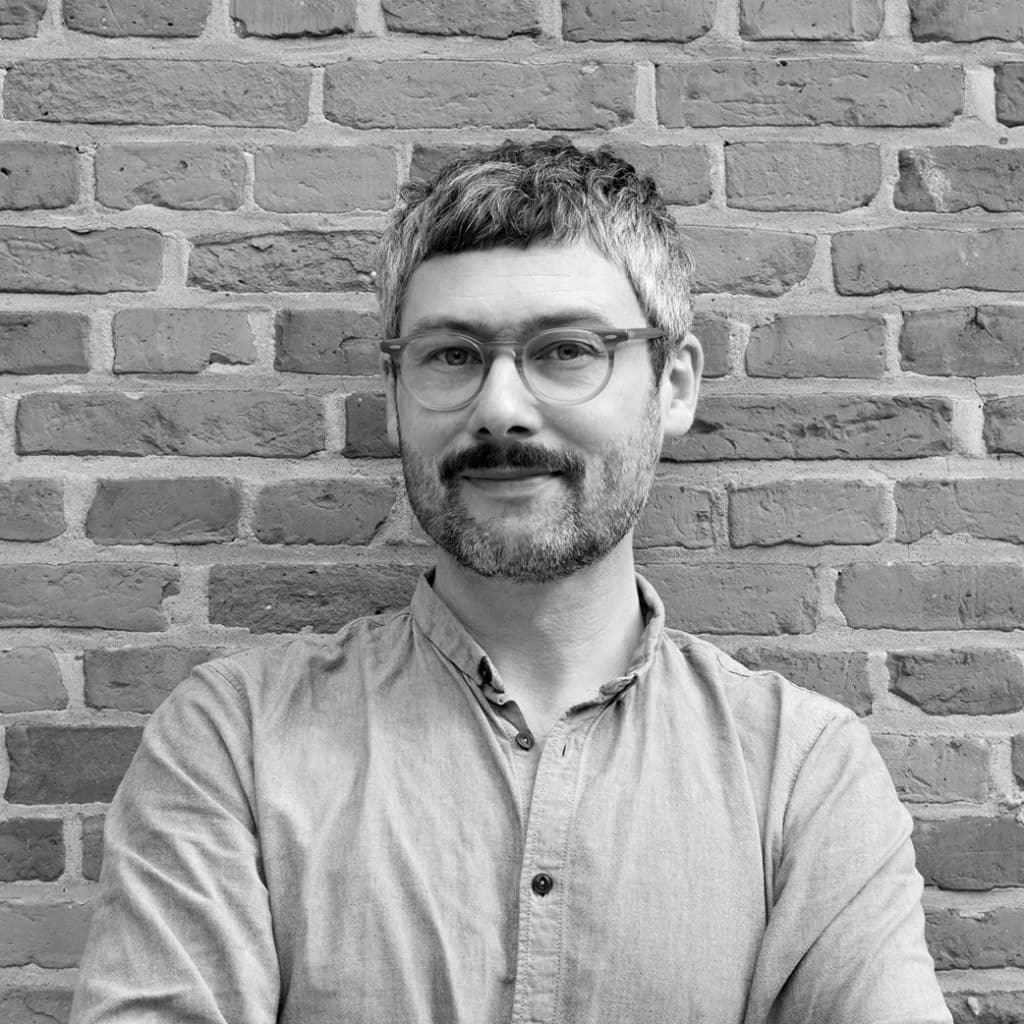
Stories
“BIM can only make a limited contribution to architecture”
Do digital tools make architects’ lives easier and designs more creative? Or do BIM and the like entrench replicable architecture without containing a deeper message? A debate.


Nils Krämer is a freelance architect. After completing his studies in Dessau, he joined Elisabeth and Martin Boesch architects in Zurich in 2006, primarily working on projects closely related to the themes of “building redevelopment” and “continued building”, such as the Kurtheater Baden and the Kongresshaus in Zurich (jointly with Diener & Diener). He has been self-employed in Germany since 2015 and runs EDIT Architektur in Hummelfeld, Schleswig-Holstein, together with his wife, Sandra Flohr.

Shahin Farahzadi has been working as BIM manager and head of the Cologne office at formitas, a company specializing in the digitization of the construction industry, since 2015. The trained architect has ample experience, having worked on more than 20 BIM projects. He supports building owners and planning offices in developing and implementing BIM strategies and regularly gives lectures on digital construction.
FORMLINER
Mr. Krämer, Mr. Farahzadi, what role did digital tools play in your last project?

Nils Krämer
We recently finalized the roof renovation of a historic building in the city of Eckernförde. We processed this task two-dimensionally in CAD. We moved relatively quickly from plans on a scale of between 1:100 and 1:5 to material sampling and collages, being closely guided by the existing buildings when it came to details. This is one way we like to work.
Shahin Farahzadi
The last project was the modernization of the Koelnmesse exhibition center. 3 large halls and the terminal building were newly built and several existing halls were renovated, for a construction volume of around 800 million euros. We were responsible for building project consulting, BIM management and the overall coordination of the new buildings and renovation work, so we brought all the specialist areas together and checked 3D models in order to avoid problems on the construction site.
FORMLINER
Do you see BIM as a problem solver?

Shahin Farahzadi
No matter how well you work as a planner, you cannot cover all the complexities in a building. The process becomes more transparent when you use BIM. Even if I’m not an expert in technical building equipment, I can see straight away if there are any collisions, for example. What used to require a high level of expertise is broken down into comprehensible, clear 3D geometry.
A lot is left to interpretation in a 2D image, which can lead to errors.
Architects have a very powerful imagination, but when I talk to the client about the floor plan or sections, they don’t always visualize it in the same way as I do. Even a rendering only shows a small, glossed over section and never the building as a whole. BIM makes the architect’s vision transparent and comprehensible, even for laypeople.
FORMLINER
Isn’t the analog model enough, which the client can walk around and touch? Mr. Kramer: Do you need BIM to convey your vision to clients?
Nils Krämer
No, in my opinion I can usually present things more appealingly and less abstractly by using the classic presentation format of actual drawings and models. It gives a different quality to the way I can present my arguments with a real model and how I can make an object accessible for work and check the relationships between rooms and proportions. We are currently planning a residential building using simple little cardboard models and, at the same time, digitally developing the 3D building structure. The 3D model is very useful for communicating with the timber construction engineer who we work with; we also like to use plans and models for work in the office and communication with the client.
With regard to planning coordination, BIM is certainly very useful for large projects and especially for public buildings, due to its planning transparency.
However, I also believe that BIM can only make a limited contribution to actual architectural issues.
In my experience, there is never an either or when it comes to the tools that are used to create architecture. The choice of means always depends on the task at hand. The degree of satisfaction with our final work product only depends to a certain extent on planning efficiency. I have the impression that it’s often more about how prepared I am to get involved in processing a task, and naturally also the time that you dedicate to something. And now and then, the result of our work also unfortunately depends on external factors that are beyond our control.
FORMLINER
Does working with the program block your inspiration process?

Nils Krämer
Yes it does, to a certain extent. For example, when working digitally I see a problem of scale. I mean that being restricted to a fixed standard is a loss. When I draw something by hand on a scale of 1:100, I also think on this scale and deal with the issues that have to do with this level of inaccuracy. It’s very efficient because it helps me focus on certain issues and ignore others. When working digitally, I miss this mental adjustment and I have to repeatedly force myself to only deal with the issue at hand.
Shahin Farahzadi
A lot of people believe that with BIM you have to draw on a 1:1 scale. But I plan a building with a 1:500 or 1:1000 cubage as if working in clay, first of all I draw in contours and not components. This solid body design is built up further, then provided with the components before I finally go into more design details.
I agree with you, though: Designing doesn’t take place on the computer, but in a quiet moment when the brain starts to work creatively.
The implementation then decides how much time I have in order to be creative. If you work in 2D, you spend far too much time representing things on a linear plane and laboriously adapting it when you make changes. When working with BIM software such as Revit, ArchiCAD or others, I no longer have to actively think about it and can work creatively with placeholders in service phases 1 and 2. For example, if I insert a window of some kind, say one meter square, and then I have my vision.
Nils Krämer
We also do that when we work in 3D with parameterized components. The same could be said about ArchiCAD many years ago. Although there isn’t really an intelligent structure in the background generating values for me that I need in order to communicate with the client, these tools certainly make my work easier to a certain extent.
Shahin Farahzadi
Then you are already working with BIM, in any case! ArchiCAD is BIM. Drawing with building components is the first stage.
Nils Krämer
You’re right. Although for me this doesn’t have much to do with the actual core of our work, as it’s primarily drawing work. This way of working is an aid to drawing, but the quality of the architecture is developed elsewhere, in my opinion.
For me, architecture is doing relatively hard work on a floor plan, for example, which I ideally have in front of me, which I can look at and which I can relate to using my hands, my eyes and my brain. With purely digital means on the computer, I only have this relationship to a very limited extent. There is no intelligent connection from my hand to my brain. Rather, it’s a very indirect translation process via user interfaces. I think it’s about establishing a relationship between myself and what I’m doing. And I can’t do that as well with a digital tool as I can with a manual tool.
Shahin Farahzadi
You mean pen and paper?
Nils Krämer
That’s right. I can do so up to a certain point and then I relatively quickly start working on it digitally, print it out again, clarify something by hand, draw over it again and then adjust the drawing on the computer. For me, this has proven to be an extremely efficient work process. But of course, it’s all a matter of taste.
Shahin Farahzadi
That’s how great architects such as Zaha Hadid work. Although she worked out most of the designs parametrically or using artificial intelligence, her designs almost always started with a drawing, an oil painting, or a charcoal drawing. One thing does not exclude the other.
Nils Krämer
So, I think these are parallel processes. BIM can offer us greater quality in planning. But we can’t answer really important questions with it. Questions about the quality of our living environment, environmental issues, the topic of affordable housing: These are issues that affect society as a whole, and as architects we shouldn’t wash our hands of them. At the same time, we have to be careful that we don’t allow ourselves to be reduced to parameters such as energy efficiency or DIN standards.
What we deliver must also be architecture and contribute towards the establishment or consolidation of building culture.
Today, architectural production has largely degenerated into a service. And people don’t find most of what architects produce interesting. People can’t relate to the things being built. Our primary task should be to ensure that they can.
Shahin Farahzadi
If you look at Bjarke Ingels or Zaha Hadid: The architecture that, as you say, creates an emotional connection, was mostly created in a highly digital way. Cookie-cutter architecture has arisen in the last 50, 60 or 70 years. The beautiful things in recent years, whether an underwater museum or fantastical high-rise buildings that have pushed us to the limits of what can be built, have become possible because we now work in a different way.
Maybe digitality will bring us back to where visionaries like Le Corbusier were.
He thought outside the box because it was financially possible to do so then, in contrast to most architects nowadays. BIM ensures that a detached house in the countryside remains exceptional but is still affordable. Now, perhaps it’s the tools that allow us to be more creative because we can create more extroverted shapes.
Nils Krämer
You’re only talking about the cream of the crop of projects at the moment. The generation around Le Corbusier made a lot of good, very everyday post-war architecture in the 50s with standardized elements that are still great quality to this day. I mean, what we as architects today have to build and convert for our times is a large proportion of what’s out there. And that’s not just Bjarke Ingels or Zaha Hadid. That has to do with creating a background for life in the city and for society as a whole with a simpler architectural language.
I would find it much more exciting to ask how we can create and preserve an attractive urban space than the few special objects that are then labeled as star architecture.
My wife and I lived in cities for a long time. Now we live in the countryside. There, you very quickly come up against questions of mobility and structural change in agriculture. I think we as architects also have to talk about these everyday issues, which are subject to major changes, and perhaps not so much about aesthetics.

FORMLINER
Can BIM help solve everyday problems?

Shahin Farahzadi
Many buildings are not green because it is too time-consuming to consider what material, window or insulation to use. BIM can help: Through automation and third-party software based on the IFC models.
With BIM, you can calculate solar yields on the facade and on roof surfaces at the push of a button, or have products suggested for doors, windows and insulation in order to make the design greener. Or intelligent buildings – these are topics that have only become possible through digitization.
Nils Krämer
That’s certainly a contribution to buildings that I’m building today. But we have to take care of the large number of massive buildings that will be with us for the next 20 years. Which we will hopefully no longer be able to tear down so easily in the future and where it’s impossible to simply turn it into a green building at the touch of a button. At first glance, this isn’t incredibly attractive and they aren’t the cool Bjarke-Ingels and Zaha-Hadid projects, but rather a bit of bread-and-butter architecture, which we still have to do well.
FORMLINER
Do you use BIM in existing buildings, Mr. Farahzadi?
Shahin Farahzadi
40 percent of the projects we do are existing buildings. We do things in the same way. As soon as a building is approved, we measure it and set it up as BIM models. You can’t always just remove the core from the building: many of them are contaminated with asbestos.
We use BIM to our advantage for that. We include the pipes in the model, then there is a digital model for the construction workers. You can walk around the construction site with a smartphone and use augmented reality to see the pipes without having to drill the wall open.
We work with BIM to make the dismantling of nuclear power plants and other highly complex existing buildings manageable. In the past, this could only be done under difficult conditions and exposed employees to dangers. By measuring and entering the components, we know exactly how much needs to be disposed of.
FORMLINER
Isn’t it time-consuming to digitally equip an entire construction site?

Shahin Farahzadi
The new software programs such as Gamma AR run on normal smartphones. The tool accompanies the entire cycle; it can be used to find components during modifications and operations. Revision planning also works with it: If I see mistakes on the construction site, I take a photo, select the component, for example if the wall is contaminated with asbestos, and mark it – and everyone following the project with the app knows about it. This saves a lot of time and prevents costly mistakes.
Nils Krämer
But you can’t do without plans, can you? There is always the translation process into 2D plans for the building application plan or for the client at different planning stages, right?
Shahin Farahzadi
Definitely.
Nils Krämer
I wouldn’t want to do without the plan on the construction site, either. That’s the basis for the contract I have with the craftsman.
Shahin Farahzadi
It’s not an either or – it’s always an addition. Be honest: How many construction sites have you been to where everything went without a hitch? Something always goes wrong.
Once we had a partial renovation involving re-pouring some of the floors. The client did not want the GAMMA AR software on the construction site. One of our employees then persuaded him to take us to the construction site and look at it together using GAMMA AR. In the first five minutes we found almost 20 openings that were supposed to be cast but didn’t appear on the formwork plan. Something had been lost somewhere in the 2D plans.
Nils Krämer
A classic planning process with the corresponding specialist planner coordination actually has this under control.
Shahin Farahzadi
No.
Nils Krämer
Yes, of course, for average sized projects. If you do this work carefully, you won’t miss out any penetrations and you can also check a collision plan using a simple sectional drawing and a simple floor plan. That’s my responsibility as a planner who has to coordinate the specialist planners.
Shahin Farahzadi
That may work for manageable projects. But at an airport you can’t do 3 or 4 or even 200 cuts to find a collision. It’s impossible.
No major construction in Germany runs according to the estimated cost plan.
In 2D you can’t do something like that without incurring costs. I once spoke to a client who said he’d never seen it any different. When he builds a district, he knows that on average it costs over 10 percent more than estimated. And with a construction volume of 60 million euros, that’s 6 million euros that are simply thrown away.
Nils Krämer
In a building with a certain level of complexity, I always have a reserve for contingencies, because it would be nonsense not to. But BIM can’t do that for me, either. I worked with Diener & Diener on the renovation of the congress building in Zurich, a very complex building with existing and new sections. Of course, you have to think about the building services and statics of a building from the start and check during every phase whether enough leeway has been planned. No client would finance the digital recording of every building in three dimensions, because we would not be able to meet our planning obligations otherwise.
Shahin Farahzadi
That costs 50-60,000 euros. That’s nothing compared to what it costs when things go wrong. The best example is Berlin Airport.
Nils Krämer
It’s exactly these typical examples that show it’s often more about political errors and problems in project organization and planning issues.
Shahin Farahzadi
The construction sites don’t run. In all the projects we have worked on, we find problems in the first run that would have caused a lot of costs on the construction site.
FORMLINER
Could digital tools also take over the design in the near future?

Shahin Farahzadi
In my opinion, it’s only a matter of time for new buildings.
Most things that are perceived as aesthetic can be grasped mathematically, but there is the golden ratio, the perfect shapes from nature – and these things can be made mathematically tangible.
Google has artificial intelligence software that learns the design language from artists and then produces works of art in their style. Art critics cannot tell whether something is by Chagall or Monet or not. That would work just as well on a building. If I set the framework conditions, such as size, number of rooms, use, I’m sure that AI software would do it well.
FORMLINER
Then what are architects still needed for?
Shahin Farahzadi
Architects don’t just draw. They take care of implementation on the construction site. There has to be someone who has planning sovereignty.
FORMLINER
You are describing the work of project managers and service providers, not that of architects.

Shahin Farahzadi
Architects 200 years ago didn’t do what they do now.
They calculated the statics, which a third party now takes care of. Now you only do a fraction of the work you did 100 or 200 years ago, but you are still an architect.
Nils Krämer
That’s right, today it’s less about architecture and more about building production. I don’t think the difference people make between service and creativity is helpful. I think we need both in the end.
I would also like to get away from the aesthetic concept that is often associated with our work.
The work of art that a computer spews out for me may be a work of art, but that’s not what interests me in a work.
My aim is to read it from a social context or with a view to the production conditions that lead to an artistic work. It’s not just about the golden ratio: I can do the most boring things with it.
I can also tell my computer to design every bathroom for me within certain parameters and then the result will be a well-functioning bathroom. In conversation with the client, you realize that the bathroom may not match the rest of the apartment and you may put the bathtub in the bedroom and new constellations will arise that are much more interesting and somehow take us further. But the computer doesn’t tell me that. These are processes that can’t be developed parametrically.
Shahin Farahzadi
In the end, I think that our views are not really that far apart. It’s just that we work in different areas. People like us have to work to ensure that our sense of aesthetics fits the zeitgeist and adapts and that we ourselves determine the direction it’s headed. And not those who are only committed to offering everything even cheaper.
Nils Krämer
I think we are in a constant process of renewal as a society and we as architects have to ask ourselves how our professional reality relates to the outside world. Everyone has to do that for themselves. The field is certainly big enough for different positions.
But it would be a genuine loss if we were to get rid of proven cultural techniques in the wake of new technologies. The current situation shows us the possibilities that digital technologies open up and also where they may come up against their limitations.


